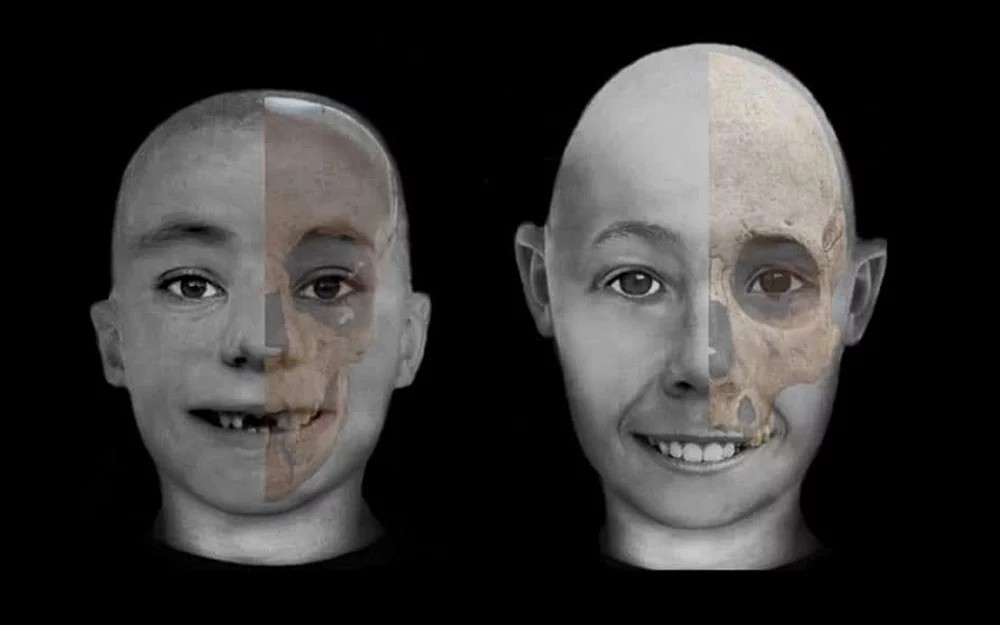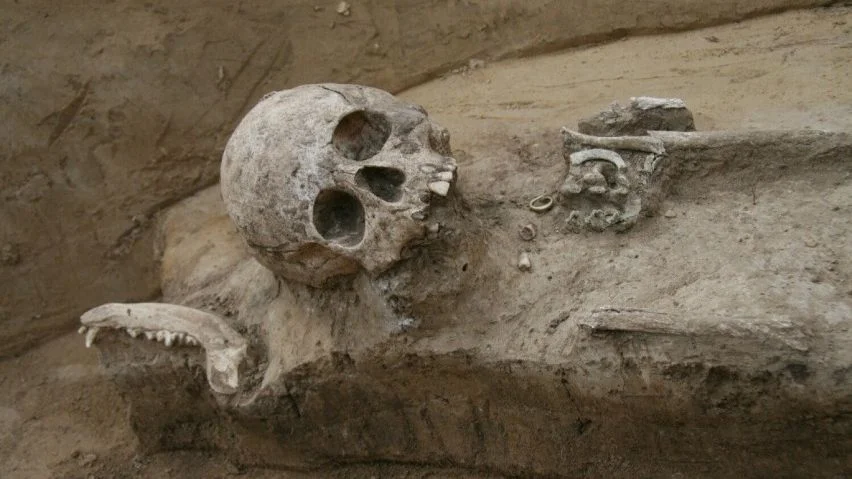1,600-year-old Hun burial in Poland contains 2 boys, including one with a deformed skull
Archaeologists have unearthed a remarkable double burial in Poland, dating back 1,600 years, which marks the oldest known Hunnic burial site in the country. This discovery was made in the village of Czulice near Krakow.

The Huns, a formidable group of nomadic warriors originating from Central Asia, are renowned for their devastating raids across Europe in the 4th and 5th centuries.
Under the leadership of the infamous Attila the Hun, referred to as “the Scourge of God” by contemporaneous Christians, they established a vast empire that extended from modern-day Russia to France.
Attila’s military prowess was so formidable that both the Eastern (Byzantine) and Western Roman empires paid him tributes to avoid his wrath.
In 2018, Jakub Niebylski, an archaeologist with the Polish Academy of Sciences, led an excavation in Czulice that unearthed the grave.
This site contained the remains of two boys aged between 7 and 9 years, buried alongside an assortment of grave goods and animal remains.
The grave, an oval pit located just over two feet below the surface, contained the scattered bones of the boys, identified through DNA analysis as having distinct ancestries.
One boy labeled Individual I, was of local European origin, likely connected to the Pannonian Plain in modern-day Hungary. The other, Individual II, exhibited genetic affinities with present-day Asian populations, particularly nomads from Kazakhstan and Kyrgyzstan, and was determined to be of Hunnic origin.
The Hunnic boy’s remains were particularly notable for the artificially deformed shape of his skull, a practice common among the Hunnic elite aimed at distinguishing their social status.
This boy was buried with several valuable items, including a gold earring, silver buckles, a clay vessel, and an iron knife, indicative of his high status. In contrast, the European boy, who lacked grave goods, was found buried on his stomach, suggesting a lower social status, possibly as a servant or companion to the Hunnic boy.
Radiocarbon dating placed the burial between CE 395 and 418, making it the oldest known Hunnic burial site in Poland. This timeline corresponds with the period of Hunnic incursions into Europe, driven by climatic changes and the search for new resources.

The double burial also included the remains of a dog, a cat, and a crow, believed to be the boys’ animal companions for their journey into the afterlife. This aspect of the burial is unusual for the Huns and may reflect a borrowing from Roman funerary practices.
Further analysis of the human bones, conducted through CT scans and X-rays, along with isotope and ancient DNA testing, revealed more about the boys’ lives and origins.
The Hunnic boy’s lesions in his eye sockets suggested chronic anemia or another disease that may have contributed to his early death. Isotopic analysis of the boys’ diets indicated that both had protein-rich diets, but the lack of grave goods for the European boy hinted at his lower social status.
The practice of cranial deformation, which the Huns adopted from the Alans, an ancient Iranian nomadic tribe, was a mark of aristocracy and elite status.
This burial site in Czulice, therefore, provides a glimpse into the cultural practices and social hierarchies of the Huns, as well as their interactions with local populations during their migrations into Europe.
The findings were published in the Journal of Archaeological Science.
An interesting double burial from Czulice with children belonging to a Hun group displayed variation. Both were boys, but one had an altered scull, was equipped with prestigious object and displayed Asian genetic ancestry: https://t.co/HOxIev2xxY pic.twitter.com/83fRvj7YAp
— Anders Götherström (@AndersGother) May 3, 2024



